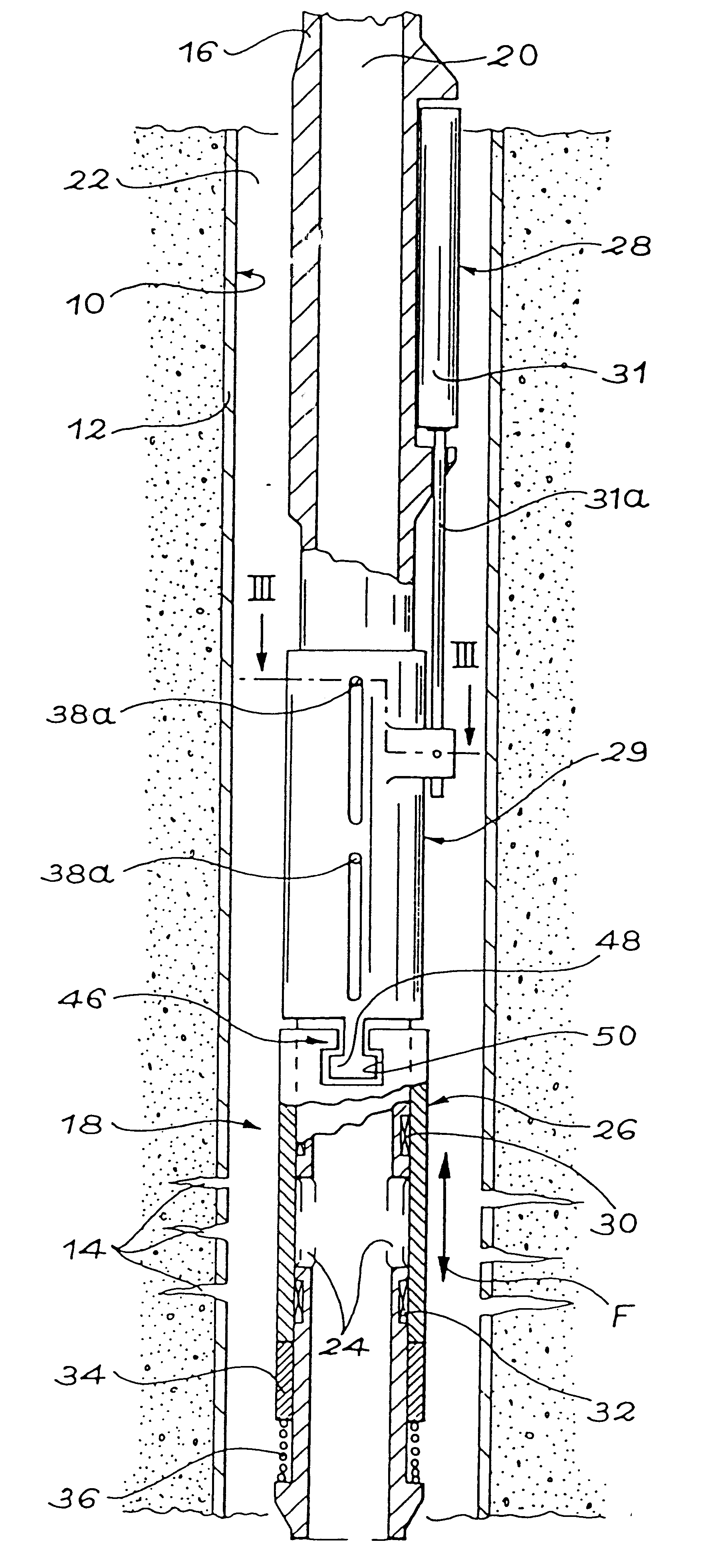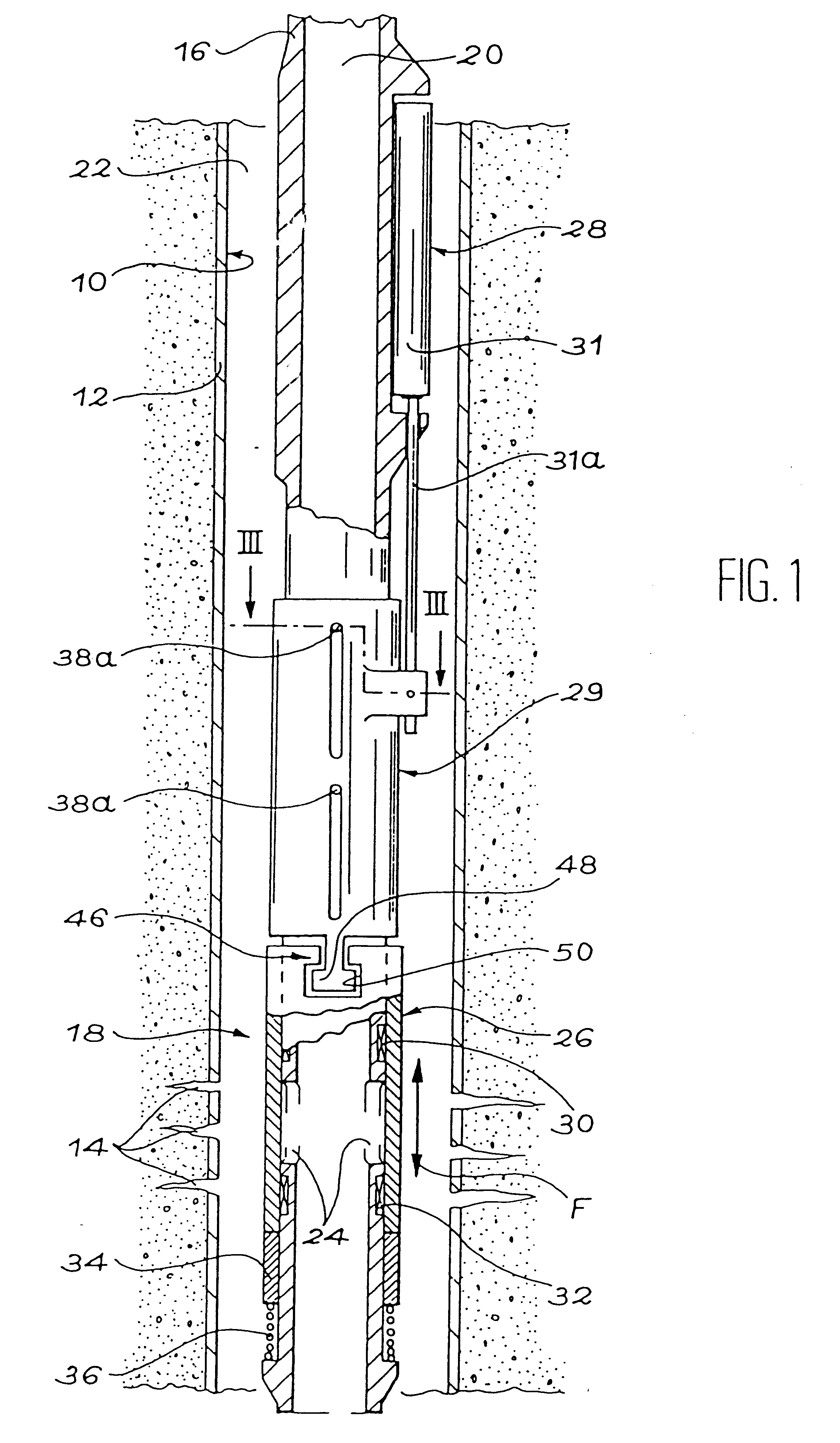Method and device for downhole flow rate control
a flow rate control and flow rate technology, applied in the direction of fluid removal, sealing/packing, borehole/well accessories, etc., can solve the problems of sleeve to tilt, tilting torque giving rise to friction between the sleeve and the production tubing, and forming of deposits on the production tubing
- Summary
- Abstract
- Description
- Claims
- Application Information
AI Technical Summary
Benefits of technology
Problems solved by technology
Method used
Image
Examples
Embodiment Construction
In FIG. 1, reference 10 designates an oil well in production, only a bottom region of which is shown. It should be noted that said bottom region may extend vertically, as shown, or horizontally, or on a slope, without going beyond the ambit of the invention. When the flow rate control device is placed in a horizontal or deviated region of a well, the expressions such as "downwards" and "upwards" used in the following description then mean respectively "away from the surface" and "towards the surface".
The walls of the oil well 10 are reinforced with casing 12. In the region of the well shown in FIG. 1, the casing 12 is perforated at 14 so as to cause the well to communicate with a natural deposit of petroleum fluid (not shown).
To enable the petroleum fluid to be conveyed to the surface, production tubing 16 is received coaxially in the well 10 over its entire depth. The production tubing 16 is made up of a plurality of tubing segments interconnected end-to-end. One of the segments, s...
PUM
 Login to View More
Login to View More Abstract
Description
Claims
Application Information
 Login to View More
Login to View More - R&D
- Intellectual Property
- Life Sciences
- Materials
- Tech Scout
- Unparalleled Data Quality
- Higher Quality Content
- 60% Fewer Hallucinations
Browse by: Latest US Patents, China's latest patents, Technical Efficacy Thesaurus, Application Domain, Technology Topic, Popular Technical Reports.
© 2025 PatSnap. All rights reserved.Legal|Privacy policy|Modern Slavery Act Transparency Statement|Sitemap|About US| Contact US: help@patsnap.com



